If you’ve never tried the classic Greek Pastitsio then you’re missing out. The pasta, a tomato based meat sauce and bechamel topping lead some to call Pastitsio ‘Greek lasagna’ and while it has similar elements it is a dish all of its own.
In fact, it’s even easier to make Pastitsio than it is lasagne as there are only 3 layers.
What is Pastitsio?
Greek Pastitsio (sometimes spelt pastichio) is a layered baked dish consisting of tubular pasta, meat sauce and bechamel sauce.
The pasta, which is mixed with egg white and cheese to bind it together is topped with a rich meat sauce then with creamy bechamel.
You may find some recipes suggesting lamb as the meat but, while lamb is a popular meat in Greece, many authentic pastitsio recipes say it should only use beef.
Feel free to use your preference when it comes to the meat. I’ve tried with a ratio of 1:1 lamb and beef but I much prefer this beef version.
I’ve changed a few ingredients from the traditional recipe, mainly so that you don’t need to go running out to specialty stores to find the right Greek cheese and tube pasta. This simplified version uses parmesan and penne.
How to make pastitsio
Pastitsio is made up of 3 layers. While layered meals like this do take a little extra time, each step is very simple and the end result is so worth it.
- Start by cooking some mushrooms in a little oil until they start to get a bit golden (they’re much more flavourful this way)
- Add the onion, garlic and capsicum (photo 1) and saute just until it’s softened a little before adding the meat.
- Brown the meat all over, then add all the other sauce ingredients (photo 2). Give it a good mix and let it simmer on low until the sauce is thick and coating everything.
- Cook the pasta until just barely done – check it regularly towards the end of the cooking time so that it doesn’t end up too soft. It will soften a little more once it bake plus if it’s cooked until super soft it’ll collapse when layered.
How to make bechamel sauce
- Melt some butter in a saucepan, then add the flour and mix it well (photo 3).
- Let it cook and bubble while constantly stirring it for about a minute before dribbling the milk in slowly (photo 4). Keep whisking constantly while adding the milk. It will start out looking a bit lumpy (photos 5&6) but just keep whisking and adding the milk slowly and it will eventually become nice and smooth.
- Heat the mixture for 3-4 minutes until it gets nice and thick then add some salt, pepper and parmesan (photo 7).
- Add a couple of spoonfuls of the bechamel to an egg yolk, mix it up (photo 8), then add it all back into the pot of bechamel and whisk it together.
To layer it all up
- Mix the pasta with the egg white, a little parmesan and a bit of the bechamel sauce (photo 9) then press it into the bottom of a casserole dish (photo 10).
- Tip the meat sauce over (photo 11) the top and level it out (photo 12).
- Pour the bechamel over that and level it out, then bake for around 40 minutes until the top is golden.
Tips to make the best pastitsio
- It’s important to temper the egg yolk before adding it into the bechamel. Tempering just means you are lifting the temperature of the egg yolk slowly rather than heating it too quickly and making it scramble. To temper the yolk, just add a couple of spoonfuls of the hot bechamel to the yolk, mix well then add it into the whole pan of remaining hot bechamel.
- Let the separate components cool a little before you try to layer up the dish.
- Let the baked Pastitsio sit for 15 minutes before cutting into it as it allows the layers to set nicely and stay defined. Don’t worry, it’ll still be hot when you serve.
- You can make both the meat sauce and the pasta layer a day ahead, leaving the bechamel until you’re ready to bake the dish.
This Pastitsio makes a wonderfully comforting meal that can easily feed a crowd. Full of rich flavours, it can be scaled for larger gatherings and makes great leftovers too.
Other recipes you might like
- Classic Lasagna
- Greek lamb kebabs (lamb souvlaki)
- Meatball Pasta Bake
- One Pan Chicken Pesto Pasta Bake
- Authentic Ragu Bolognese
- Mini Lasagna Cupcakes
- Steak and Mushroom Pie
- Stovetop Pumpkin Mac N Cheese
- Chicken Lasagna with Spinach and Mushrooms
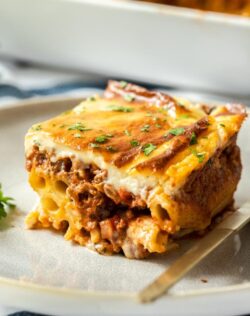
Ingredients
- 250 g dried penne pasta
FOR THE MEAT SAUCE
- 1 ½ cups sliced mushrooms
- ½ small onion
- 1 large clove garlic
- ½ large red capsicum, finely diced
- 500 g beef mince
- 1 ⅓ cups tomato passata (puree) (400ml)
- 1 tablespoon tomato paste
- ½ cup fresh parsley, lightly packed, roughly chopped
- ¾ teaspoon cinnamon
- ½ teaspoon salt
- ¼ teaspoon freshly ground black pepper
- ¼ cup water
FOR THE BECHAMEL
- ⅓ cup butter
- ⅓ cup plain (all-purp) flour
- 2 cups milk
- ½ teaspoon salt
- ¼ teaspoon ground black pepper
- 1 cup finely grated parmesan, not packed
- 1 egg
For best results, always weigh ingredients where a weight is provided
Instructions
- Preheat the oven to 200C / 395F / 180C fan forced.
- Boil 6 cups of water with a tablespoon of salt. Once boiling add your pasta and let it boil away until just cooked (notes).
FOR THE MEAT SAUCE
- Cook the mushrooms in ½ tablespoon oil until they start to colour. Add the onion, garlic and capsicum and cook for a further 3-4 minutes until starting to soften.
- Add the mince and cooking, turning regularly, until browned all over.
- Add the remaining meat sauce ingredients tomato passata (puree), tomato paste, parsley, cinnamon, salt and pepper. Then rinse the passata bottle with the water and add that too.
- Mix well, then turn right down to very low and simmer, stirring every so often, for around 10-15 minutes until the sauce has thickened and is no longer pooling.
FOR THE BECHAMEL
- Melt the butter in a saucepan (you can use the pasta pan after the pasta has been cooked and drained).
- Add the flour and whisk well. Cook for a minute or so whisking to keep it smooth.
- Slowly add in the milk while continuing to whisk until it is all added and you have a smooth white sauce. Let this cook on low for around 3-5 minutes until thickened.
- Take it off the heat and whisk in ⅔ cup of the parmesan, the salt and pepper. Whisk until smooth.
- Separate the egg into 2 small bowls. Add a couple of spoonfuls of the hot bechamel to the yolk and quickly whisk together. Add it back to the bechamel in the saucepan and mix well to combine.
TO ASSEMBLE
- Let everything cool for 10 minutes before assembling.
- Tip the pasta into your casserole dish. Add the egg white, ¼ cup of the bechamel and the remaining ⅓ cup of parmesan. Mix it well to combine, then level the pasta out and press down to flatten it a little.
- Pour all the meat sauce over the pasta and level out.
- Pour the bechamel sauce over the top of the meat and level out.
- Bake for around 40 minutes until golden on top.
- Let the pastitsio cool for 15 minutes before serving to get nice square serves.
Notes
- The pasta should be cooked through but only just. It will soften slightly more in the oven but if you cook it too soft in the water, it will then collapse in the pastitsio.
- For the bechamel, you can use whole milk or light (2%) milk. Both will work fine.
This post may contain affiliate links that earn me a small commission for my referral, at no extra cost to you. Thank you for supporting Sugar Salt Magic.

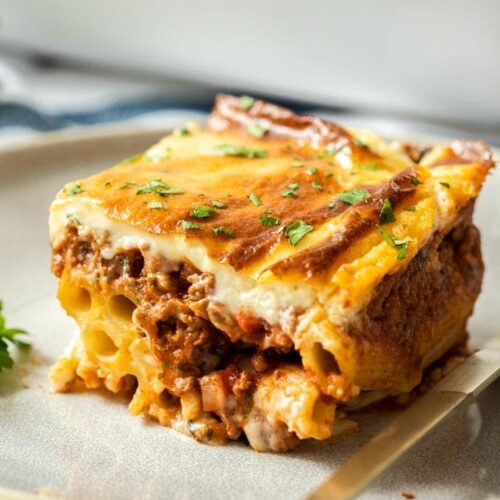

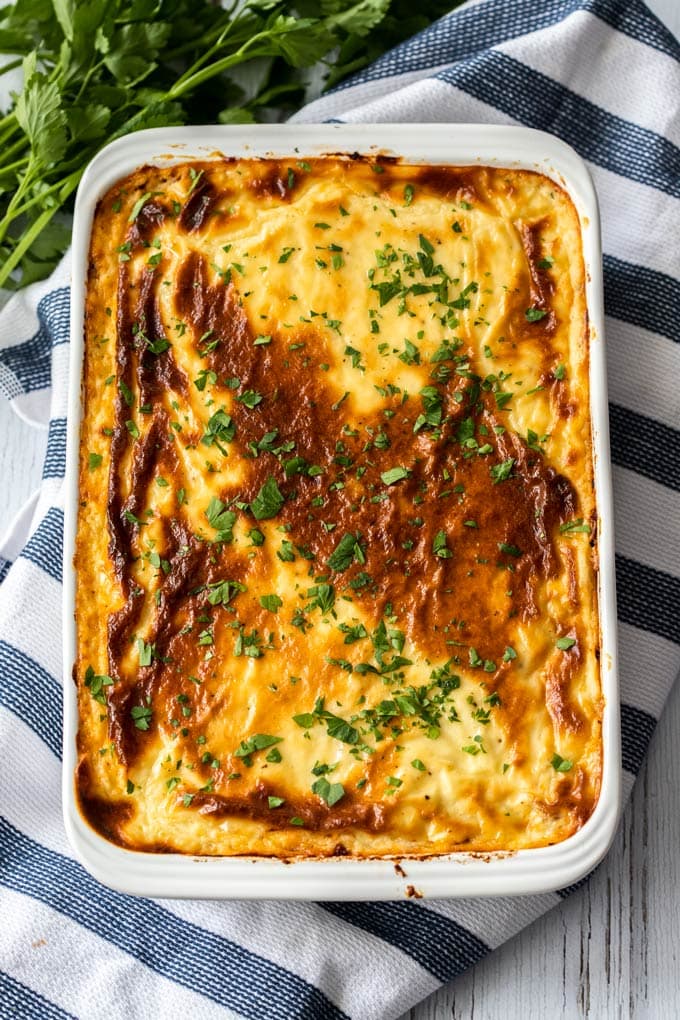
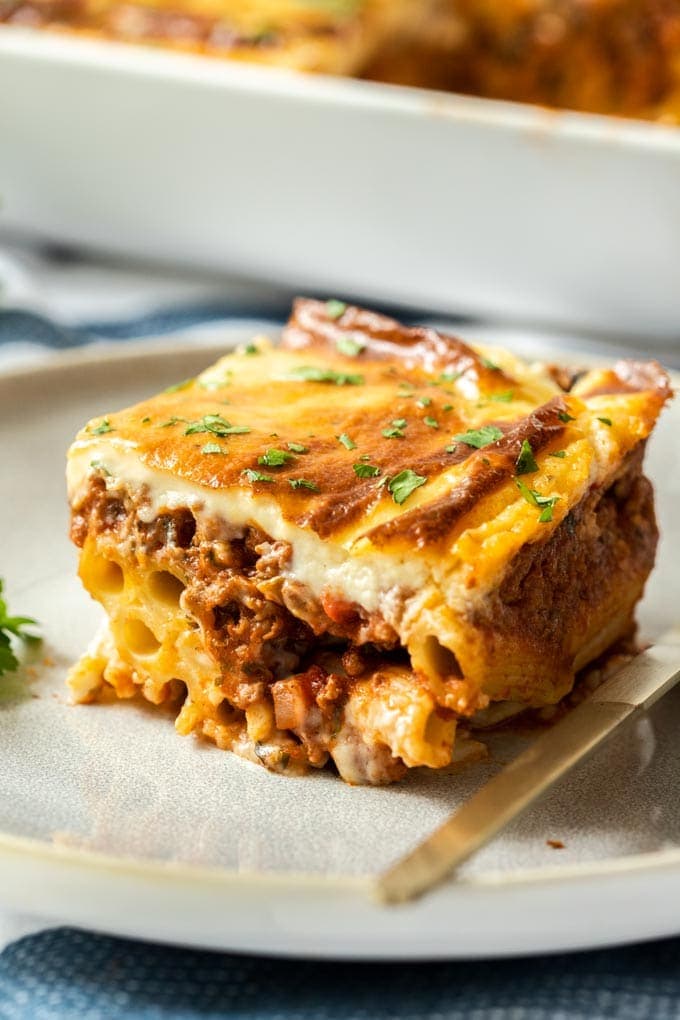
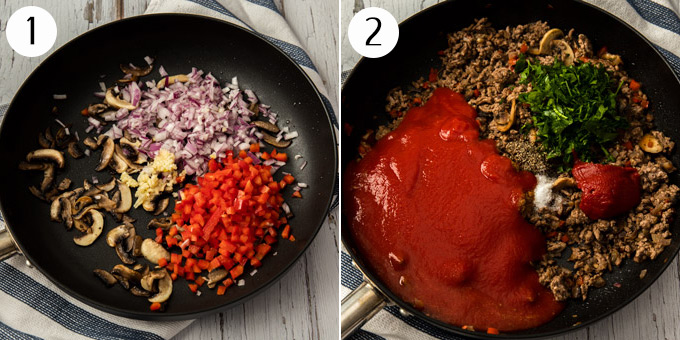
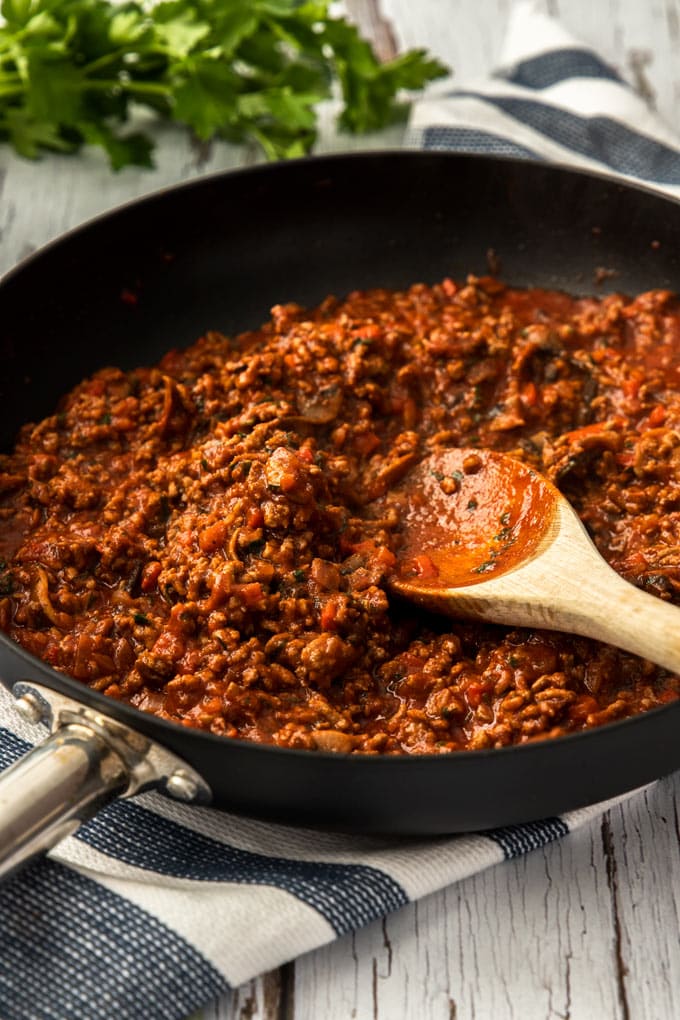
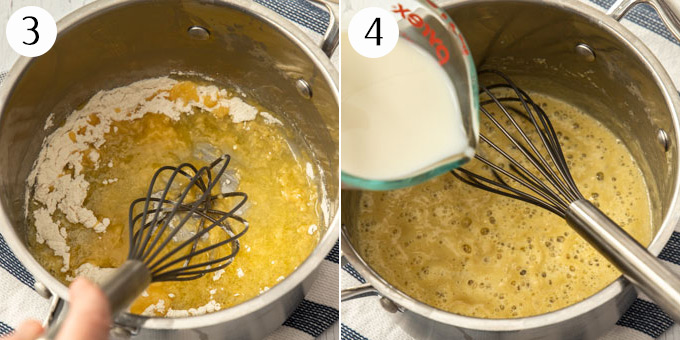
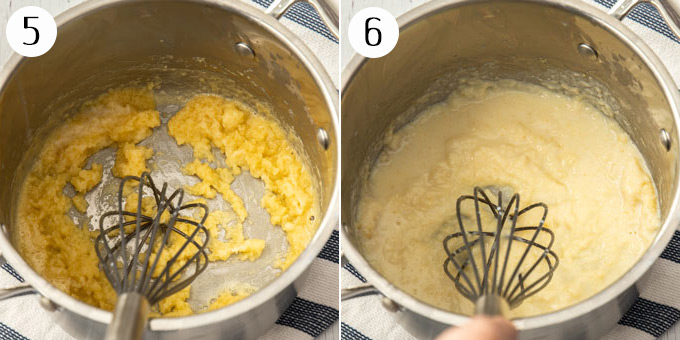
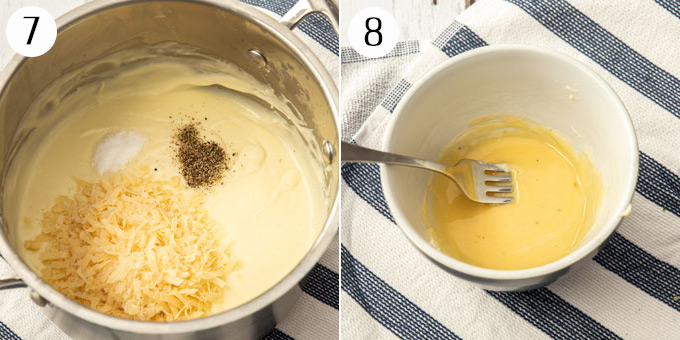
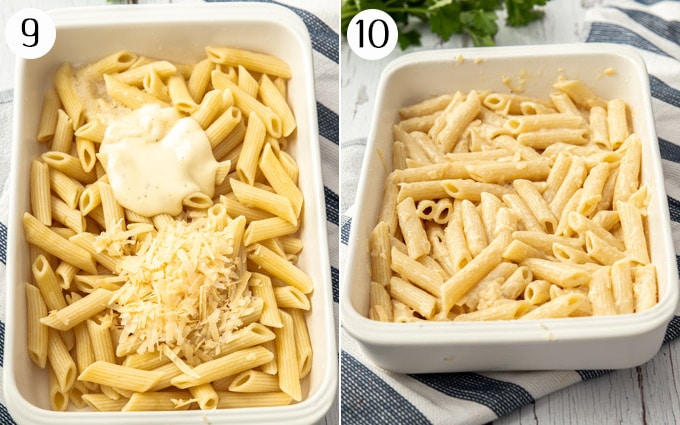
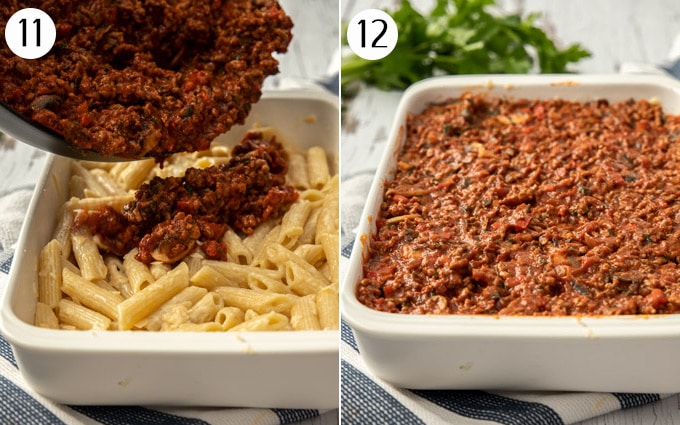
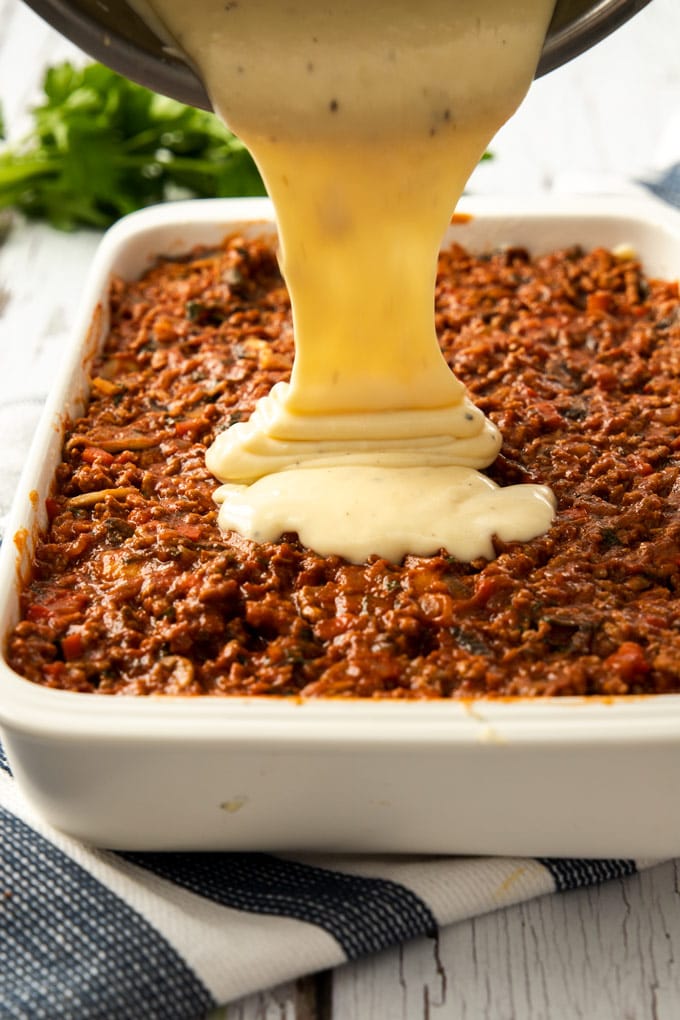
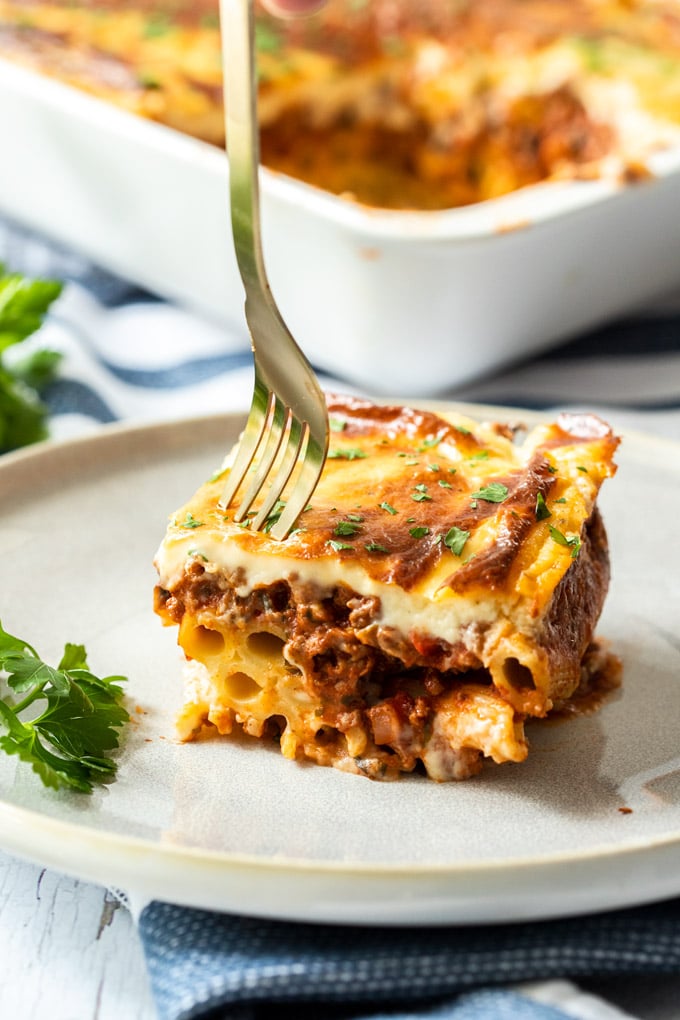
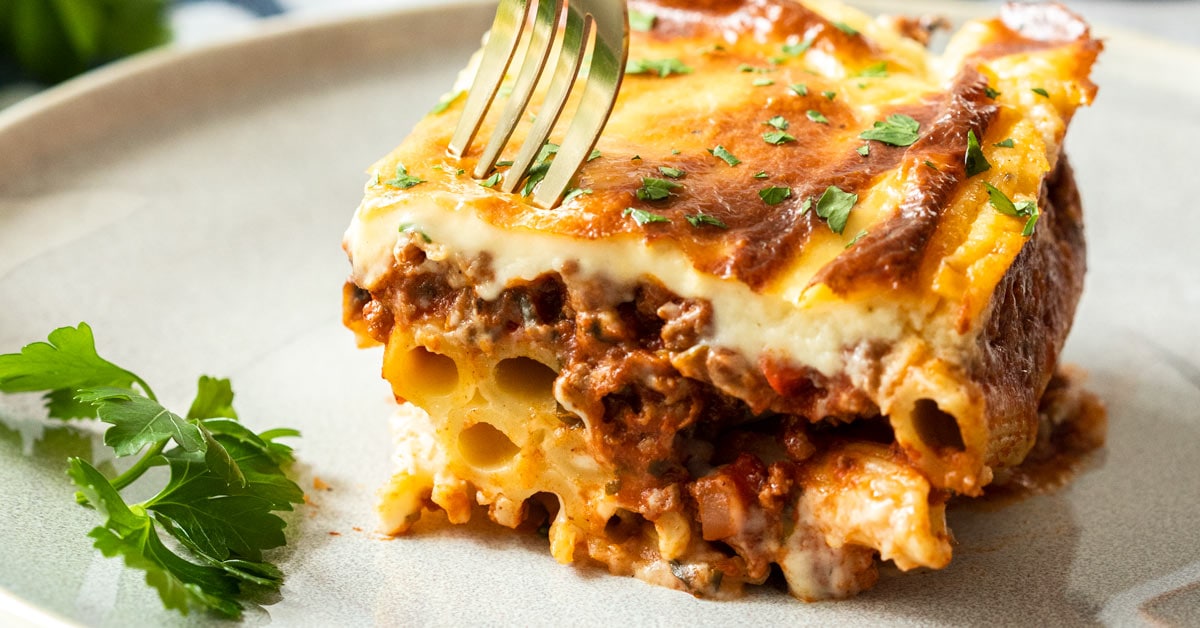

10 Comments on “Greek Pastitsio”
Delicious meal. Good way to get kids eating veggies too. Another winner to add to our meal plan 😊
So happy you all loved it Naomi.
What would be a good substitute for the capsicum?
Hi Barbie, zucchini or diced carrot or a combination of those might work nicely.
Marie, this looks incredibly amazing!!!!
Thank you so much 🙂
I love a good baked pasta, and Pastitsio is one of those recipes. It tastes very traditional (In a good way), but it is also so elegant, comforting, and hearty (Needless to say delicious). I haven’t made it for a couple of years indeed, so thank you for such a delightful reminder!
Thanks so much Ben and you’re welcome 🙂 It really is a comforting dish
This looks really hearty, comforting and delicious. The bechamel sauce sounds absolutely amazing! I can imagine this being perfect for weekly meal prep and so easy too.
It’s great for meal prep for sure. Thanks so much Trang